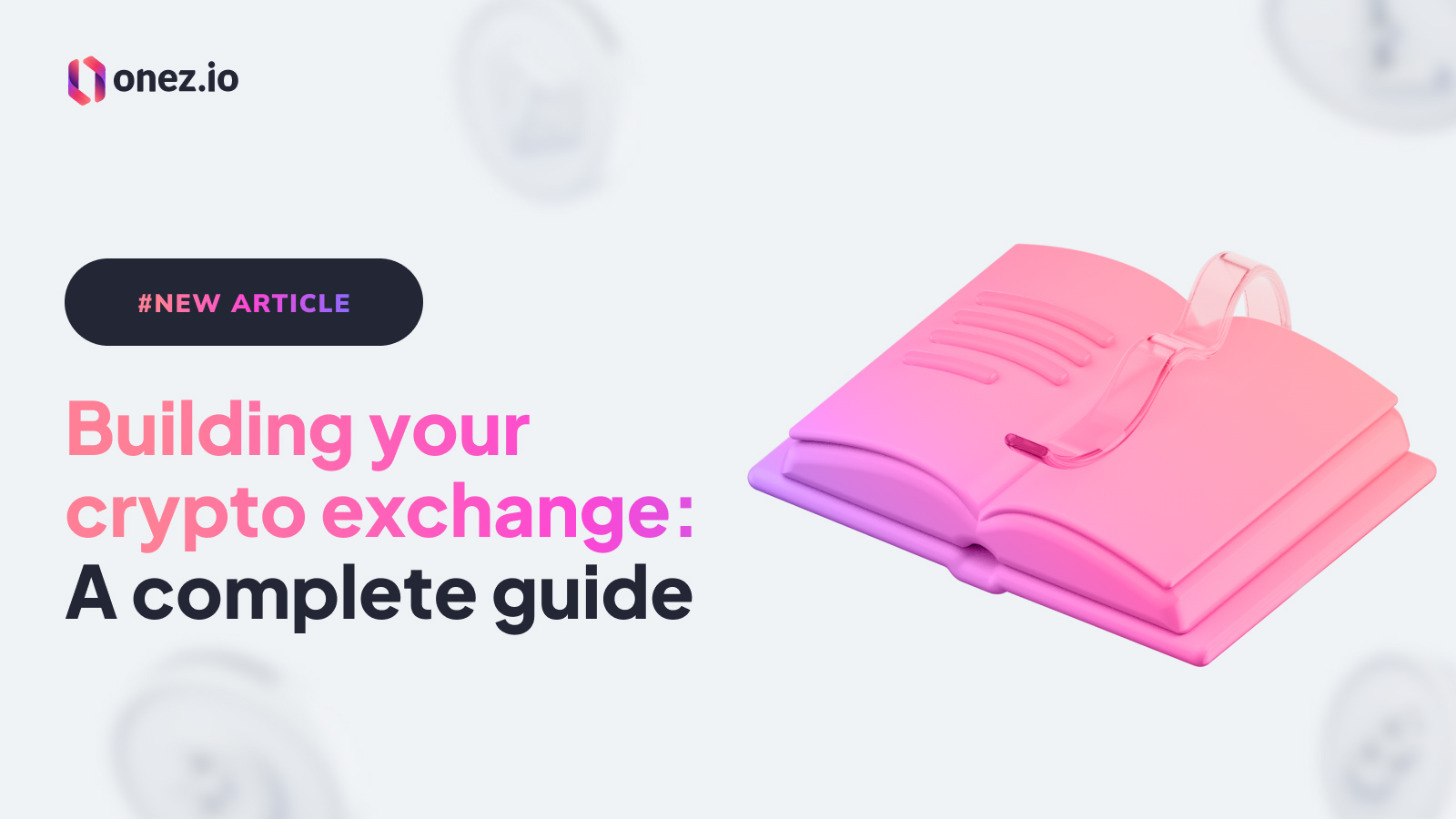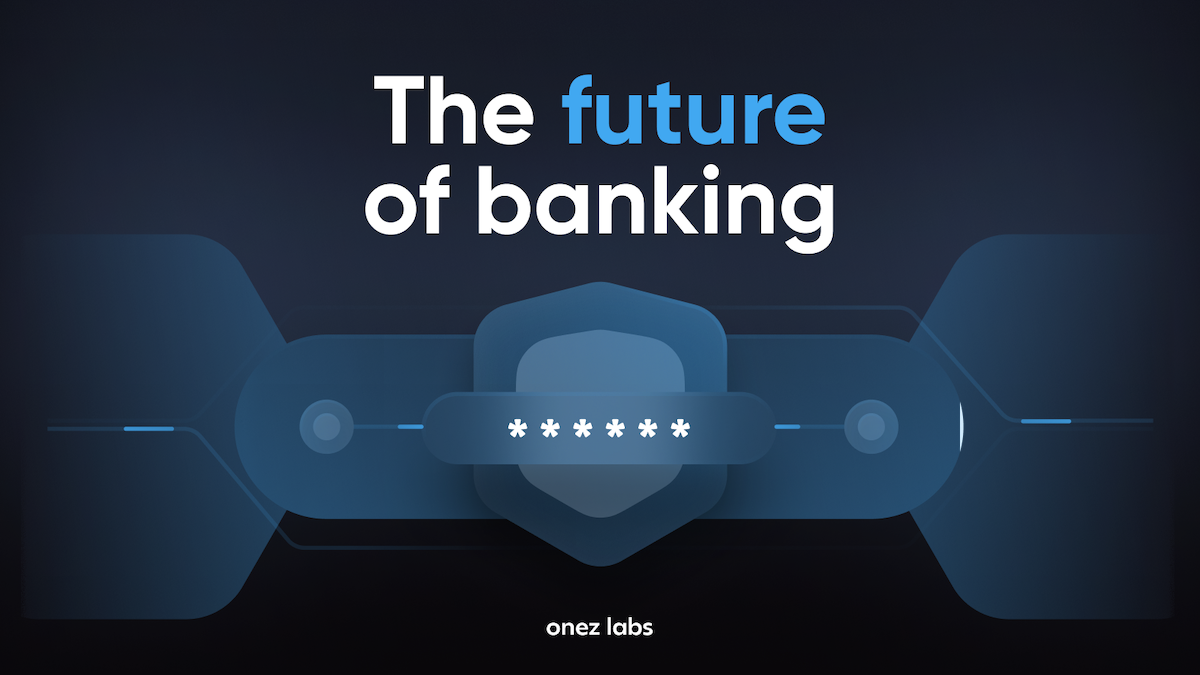Table of Contents
- What is a cryptocurrency exchange?
- Businesses must consider launching their own cryptocurrency exchange
- Recent stats reveal cryptocurrency exchanges’ meteoric rise
- Different approaches to creating a cryptocurrency exchange
- Step-by-step process to building a crypto exchange
- Costs associated with building a cryptocurrency exchange
- Strategies for scaling and growing a cryptocurrency exchange
- Bottom line
- F.A.Q.
Cryptocurrency Exchange owes its existence mainly to the growth of virtual currencies, otherwise known as cryptocurrencies. Before the introduction of Bitcoin, there were digital currency exchange platforms. However, they were mainly in the blur and reserved for further advancement of the concept of cryptocurrency. Platforms such as e-Gold and Liberty Reserve were noteworthy currency exchange platforms that preceded the emergence of Bitcoin, popularly known to have been introduced by an anonymous character in 2009.
The rise of Bitcoin warranted a greater need for cryptocurrency platforms that could easily exchange Bitcoin for fiat currencies or other cryptocurrencies that popped out during that period. This need drove many developers into their study to push out fantastic platforms regulated by swift algorithms. They had to build a cryptocurrency exchange. The results of the hard work of these developers were some of the earliest crypto exchanges, some of which have gone defunct now.
BitcoinMarket.com and Mt.Gox — launched in 2010 and eventually became the most prominent of the earliest cryptocurrency exchanges — were some of them. They handled the majority of the cryptocurrency trading activities at the time. They provided volumes of daily transactions. However, Mt.Gox had numerous loopholes and was eventually reported for bankruptcy after losing many Bitcoins in 2014. With the death of Mt.Gox, newer and better cryptocurrency exchanges rose through the ranks, redefining the crypto boom era.
These new exchanges included Bitstamp, Kraken, Coinbase, and Binance, offering a solid interface for crypto trades and transactions. In this period, altcoins gained prominence too. This article will look at creating a cryptocurrency exchange and other salient things to know if you intend to build a cryptocurrency exchange.
What is a cryptocurrency exchange?
It is an online platform where trades can take place for other digital assets, like conventional fiat money or other cryptographic transactions. To enable traders to buy and sell cryptocurrencies is the straightforward goal of cryptocurrency exchanges. They accomplish this by converting fiat money, or money backed by the government, into the user’s preferred digital currency and vice versa. A few only accept real money. Some will only take virtual money. In one way or another, they are all fee-based businesses, which is essential to their success.
These exchange sites take security and compliance seriously and offer payment options. And without it, the average user is unable to function. Creating a cryptocurrency exchange starts with a comprehensive market analysis. This entails figuring out who your target market is, evaluating the competition, and comprehending the current market trends.
Choose which cryptocurrency pairs and types of exchanges you will support and whether you will provide a decentralized or centralized platform. Consider the following online resources, tooling, and best practices to ensure this step is successful.
Businesses must consider launching their own cryptocurrency exchange
In recent years, the cryptocurrency exchange industry has reached its pinnacle. This is because of the abundance of startups and investors eager to launch a cryptocurrency exchange platform. For several reasons, companies may think about starting their cryptocurrency exchange:
Generating Revenue: Running a cryptocurrency exchange can bring in much money—exchanges profit by charging fees for trading, withdrawals, and other services.
Diversification: Establishing an exchange can help companies in the financial services or cryptocurrency sectors broaden their service offerings and diversify their revenue sources.
Control: Compared to depending on third-party exchanges, businesses that run their exchanges have more control over the platform, its features, security protocols, and user experience.
Enhancement of Brand: Operating a profitable exchange can improve a company’s credibility and reputation in the eyes of the cryptocurrency community and the more significant financial sector.
Integration with Current Services: Having one’s exchange can make integration more accessible and offer a complete user ecosystem for companies that provide other cryptocurrency-related goods or services, like wallets or payment processing.
Market Opportunity: Businesses can exploit the expanding demand for cryptocurrencies by establishing an exchange. The cryptocurrency market is still expanding. Exchanges produce enormous volumes of data about user activity, market trends, and trading patterns. This is known as data monetization. Companies can use this data to gain insights or make money by partnering with other companies or charging for analytics services.
Regulatory Compliance: Businesses have more control over adhering to jurisdiction-specific regulatory requirements when they run their exchange. By the laws of their jurisdiction, they can put the required KYC (Know Your Customer) and AML (Anti-Money Laundering) procedures into place.
Opportunities for Innovation: Operating an exchange allows companies to be creative and set themselves apart through special features, trading options, or connections to cutting-edge technologies like decentralized finance (DeFi) protocols. Gaining a competitive edge over rivals through exclusive services, more affordable rates, or quicker transaction times can all help a proprietary exchange draw in more users and liquidity.
Recent stats reveal cryptocurrency exchanges’ meteoric rise
The cryptocurrency exchange platform market has witnessed tremendous growth in the past few years. In 2022, it reached a valuation of $45 billion, with a robust compound annual growth rate (CAGR) of 16.08%. Predictions expect the market to hit $110.12 billion by 2028. Platforms like Binance and Coinbase, among others, play a pivotal role in facilitating cryptocurrency transactions, which serve as mediums of exchange.
The landscape hosts a multitude of cryptocurrencies, each boasting unique features and functionalities. Governments and regulatory bodies increasingly recognize cryptocurrencies as legitimate forms of currency. Various trends are propelling the adoption of cryptocurrency exchange platforms, including the integration of blockchain technology, the burgeoning gaming industry, and the absence of standardized regulations governing these platforms.
Embracing these trends involves creating a cryptocurrency exchange, building platforms, and developing a proprietary exchange infrastructure. Additionally, there’s a growing demand to make their own cryptocurrency exchange, build cryptocurrency exchange websites, and build a crypto exchange app to cater to the market’s and users’ evolving needs.
Different approaches to creating a cryptocurrency exchange
There are various approaches to establishing a cryptocurrency exchange, each with pros and cons. Here are a few typical methods:
Create from Start: Using this approach, a company can create a cryptocurrency exchange platform from the ground up. It provides the highest personalization and control over the user interface, security, and features. However, it requires significant investment in time, money, and technical expertise in cybersecurity, software engineering, blockchain development, and legal compliance.
White Label Solutions: White label services offer ready-made cryptocurrency exchange software to be branded and modified to suit the company’s needs. Compared to building from scratch, this approach saves time and money and can include features like admin dashboards, wallet management, trading, and KYC/AML verification. However, it may need more uniqueness and flexibility of a custom-built solution. One cryptocurrency exchange platform that leverages White Label solutions is Onez.
Open-Source Platforms: Companies can freely access and customize source code for cryptocurrency exchanges on open-source platforms. This method allows for expansion and access to security audits, community contributions, and ongoing development. However, customization may require technical expertise, and the company is responsible for maintaining security and compliance.
Blockchain Development Platforms: Blockchain development platforms like Ethereum and Binance Smart Chain provide frameworks and tools for building centralized or decentralized exchanges (DEX and CEX) using smart contracts. Building on existing blockchain infrastructure can expedite development and integration with other decentralized finance (DeFi) protocols. However, developing a secure and scalable exchange on blockchain platforms requires smart contract programming and blockchain technology expertise.
API Integration: Some companies integrate with existing cryptocurrency exchange APIs like Binance, Coinbase, or Kraken. This approach allows companies to focus on developing complementary services or products while leveraging established exchanges’ features, security, and liquidity. However, reliance on external APIs may result in less control over features, uptime, and costs.
Partnerships and Acquisitions: Businesses may consider forming alliances with or acquiring existing cryptocurrency exchanges to enter the market quickly and leverage their user base, technology, regulatory compliance, and market presence. Although it can accelerate market entry, this strategy requires careful due diligence, negotiation, and integration efforts.
Step-by-step process to building a crypto exchange
Building a cryptocurrency exchange involves several complex steps to ensure its functionality, security, and regulatory compliance. Below is a step-by-step process for creating a crypto exchange:
Market research and planning
- Conduct market research to understand the competitive landscape, target audience, regulatory requirements, and technological trends.
- Define your exchange’s unique value proposition, target markets, and business model.
- Develop a comprehensive business plan outlining your exchange’s objectives, revenue streams, marketing strategies, and operational requirements.
Compliance with laws and regulations
- To determine the legal requirements in your target jurisdictions for running a cryptocurrency exchange, speak with legal professionals.
- Implement strong privacy policies and security measures to safeguard user funds and data.
Technology stack selection
- Select the right technology stack based on the needs for scalability, security, and your exchange.
- Choose between white-label solutions, open-source platforms, blockchain development platforms, or starting from scratch when developing.
- Choose databases, frameworks, programming languages, and infrastructure suppliers to build the exchange’s front-end, backend, and database systems.
Designing user interfaces
- Provide a website or application for your exchange that has an easy-to-use and intuitive interface.
- Include necessary functions like order books, price charts, wallet management, trading dashboards, order registration, and support services.
- To guarantee a flawless user experience, ensure it works with various screens, browsers, and devices.
Exchange growth
- Provide the backend infrastructure for wallet integration, liquidity management, trade execution, and order matching.
- Put into practice trading features like stop-loss orders, market orders, limit orders, and margin trading (if applicable).
- Integrate trading pairs between fiat and cryptocurrency and secure payment gateways.
- Adopt API protocols for trading bots, liquidity providers, and third-party integrations.
Implementing security measures
- Put in place multiple layers of security to guard against fraud, hacking, and data breaches.
- Use risk management systems, cold storage options, two-factor authentication (2FA), and encryption techniques.
- Do frequent penetration tests, vulnerability assessments, and security audits to find and fix possible vulnerabilities.
Quality control and testing
- Perform extensive testing on the exchange’s security, performance, and functionality.
- Check for errors, malfunctions, and usability problems on various hardware, operating systems, and network configurations.
- Conduct load testing to assess the exchange’s scalability and ability to manage peak trading volumes.
Start-up and Rollout
- Install the exchange on a scalable, highly available, secure hosting infrastructure.
- Users should be added to the exchange gradually, beginning with a brief beta testing period to get input and fix any bugs.
- Conduct a thorough marketing and advertising campaign to draw users and create exchange liquidity.
After-launch assistance and upkeep
- Continued maintenance, customer service, and technical support are needed to answer questions from users, solve problems, and guarantee smooth operation.
- Maintain a close eye on the exchange’s functionality, security risks, and legal and regulatory compliance requirements.
- To enhance the features, usability, and security posture of the exchange, release updates, patches, and enhancements regularly.
Costs associated with building a cryptocurrency exchange
Take a look at the expenses related to establishing a cryptocurrency exchange is provided below:
Development expenses
Software development expenses include backend (order matching engine, wallet integration, security protocols, etc.) and frontend (user interface design, trading dashboard, etc.) development.
Blockchain Development: There may be expenses for creating smart contracts, gas fees, and blockchain infrastructure if creating a decentralized exchange (DEX) or using blockchain technology for specific functions.
Expenses related to integrating third-party APIs for payment gateways, liquidity providers, KYC/AML verification services, and other features are called third-party integrations.
Quality Assurance and Testing: Set aside money to test the usability, security, performance, and functionality of the exchange to find and fix any problems or bugs.
Regulatory and legal expenses
Legal Consultation: Charges for retaining legal counsel to ensure rules are followed, secure licenses, and create user contracts, privacy policies, and terms of service.
Costs of infrastructure
Hosting and Cloud Services: The price of using scalable and secure hosting infrastructure, like virtual private servers (VPS), dedicated servers, or cloud servers, to host the exchange.
Investing in hardware security modules (HSMs), encryption technologies, cybersecurity measures, and other security solutions is necessary to safeguard user funds and data from potential threats.
Costs of operations
Employee Salaries: Provide funds for employing professionals needed to run and maintain the exchange, such as developers, designers, compliance officers, attorneys, and customer service representatives.
Marketing and Promotion: The costs associated with public relations, advertising, marketing campaigns, and promotional activities aimed at drawing in customers, creating liquidity, and raising brand awareness.
Costs of upkeep and assistance
Sustained Development: Resources allocated to provide frequent upgrades, fixes, and additions to strengthen the functionality, security, and performance of the exchange.
Technical Support: Set aside money for regular maintenance, customer support, and technical support to answer user questions, solve problems, and guarantee smooth operation.
Strategies for scaling and growing a cryptocurrency exchange
To scale and grow, a cryptocurrency exchange must combine technological innovation, marketing, regulatory compliance, strategic planning, and first-rate customer service. The following are some methods for expanding and growing an exchange for cryptocurrencies:
Scalable Infrastructure: To manage rising trading volumes, user registrations, and transaction throughput, invest in a dependable and scalable hosting infrastructure. Utilize highly available and redundant dedicated servers or cloud-based solutions to ensure seamless operation during peak hours.
Advanced Trading Features: Consistently innovate and roll out advanced trading features like margin trading, futures contracts, options trading, decentralized finance (DeFi) integrations, and algorithmic trading tools to draw in professional traders and boost trading activity.
Liquidity Management: Implement strategies to improve liquidity on the exchange, such as market-making initiatives, liquidity pools, competitive trading events, and alliances with market makers and liquidity providers. Ensure minimal slippage, deep order books, and tight spreads to enhance the user experience.
Global Expansion: Extend your exchange’s reach into new markets and geographical areas by supporting extra fiat currencies, language localization, and regulatory compliance in target jurisdictions. Form strategic partnerships with local companies, financial institutions, and regulatory bodies to facilitate market entry and growth.
Community Engagement: Cultivate a robust and active community of traders, investors, developers, and enthusiasts through social media, forums, online communities, and educational initiatives. Promote knowledge sharing, networking, and cooperation among participants in the cryptocurrency ecosystem through conferences, webinars, and get-togethers.
User Acquisition and Retention: Create focused marketing campaigns to attract new users, encourage current users to trade more often, and recommend the platform to others. Offer incentives such as referral bonuses, loyalty programs, competitive trading fees, and discounts to promote user engagement and retention.
Regulatory Compliance: Ensure compliance with know-your-customer (KYC), anti-money laundering (AML), and other financial regulations in all jurisdictions where the exchange conducts business. Develop vital compliance programs, conduct routine audits, and collaborate with regulatory bodies to preserve credibility and trust.
Security Enhancements: Prioritize security measures to safeguard user funds, information, and the exchange platform’s integrity. Implement two-factor authentication (2FA), cold storage solutions, multi-layered security protocols, and ongoing monitoring for suspicious activity, cyber threats, and insider attacks.
Institutional Adoption: Attract institutional investors and corporate clients by providing institutional-grade services such as over-the-counter (OTC) trading desks, custody solutions, insurance coverage, compliance services, and regulatory reporting tools. Form alliances with family offices, asset managers, and institutional players to boost trading volumes and liquidity.
Sustained Innovation: Foster an innovative and experimental culture within the company by encouraging staff members to suggest and introduce novel concepts, tools, and services. Stay abreast of market trends and cutting-edge technologies such as tokenized assets, non-fungible tokens (NFTs), and decentralized finance (DeFi) to remain competitive in the rapidly changing cryptocurrency market.
Having the right people on board and conducting thorough research is essential for developing a cryptocurrency exchange platform for your company. You can stay informed and aware of potential risks, benefits, and investigative steps by conducting research. Onez, a top cryptocurrency exchange globally, provides distinctive features. These characteristics strike a balance between its use as a quick fix for current problems and a long-term solution for upcoming advancements.
Bottom line
To save you from failing to build a solid cryptocurrency exchange platform for your business, you must adhere to and carry out the above-listed measures. They will go a long way in keeping your cryptocurrency exchange platform competitive, endearing, and operative for as long as possible.
F.A.Q.
What is a cryptocurrency exchange?
A cryptocurrency exchange is an online platform where trades can take place for other digital assets, like conventional fiat money or cryptographic transactions. Its primary goal is to enable traders to buy and sell cryptocurrencies by converting fiat money into digital currency and vice versa.
What are the key factors to consider when launching a cryptocurrency exchange?
Key factors include conducting comprehensive market research, ensuring compliance with laws and regulations, selecting the right technology stack, designing user-friendly interfaces, implementing strong security measures, performing quality control and testing, and maintaining the platform after launch.
What are the different ways to create a cryptocurrency exchange?
A3: The approaches include creating from scratch, using white-label solutions, leveraging open-source platforms, utilizing blockchain development platforms, integrating with existing cryptocurrency exchange APIs, or forming partnerships and acquisitions.
What are the costs associated with building a cryptocurrency exchange?
A4: Costs include development expenses, blockchain development costs, third-party integration costs, quality assurance and testing expenses, legal consultation fees, infrastructure costs, operation costs including employee salaries and marketing expenses, and maintenance and support costs.
How can a cryptocurrency exchange be scaled and grown?
A5: A cryptocurrency exchange can be scaled and grown through strategies like having a scalable infrastructure, offering advanced trading features, managing liquidity, expanding globally, engaging the community, acquiring and retaining users, complying with regulations, enhancing security, attracting institutional adoption, and fostering sustained innovation.



